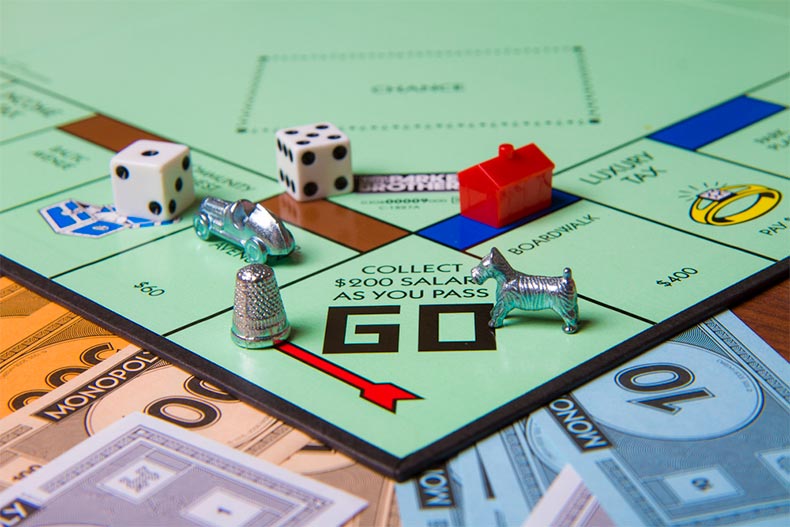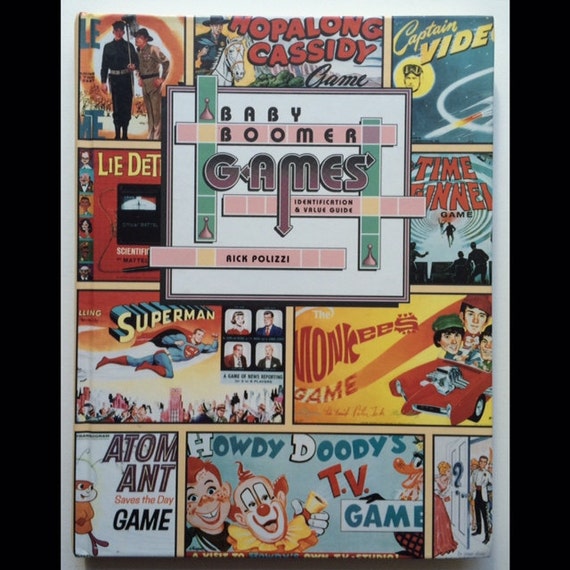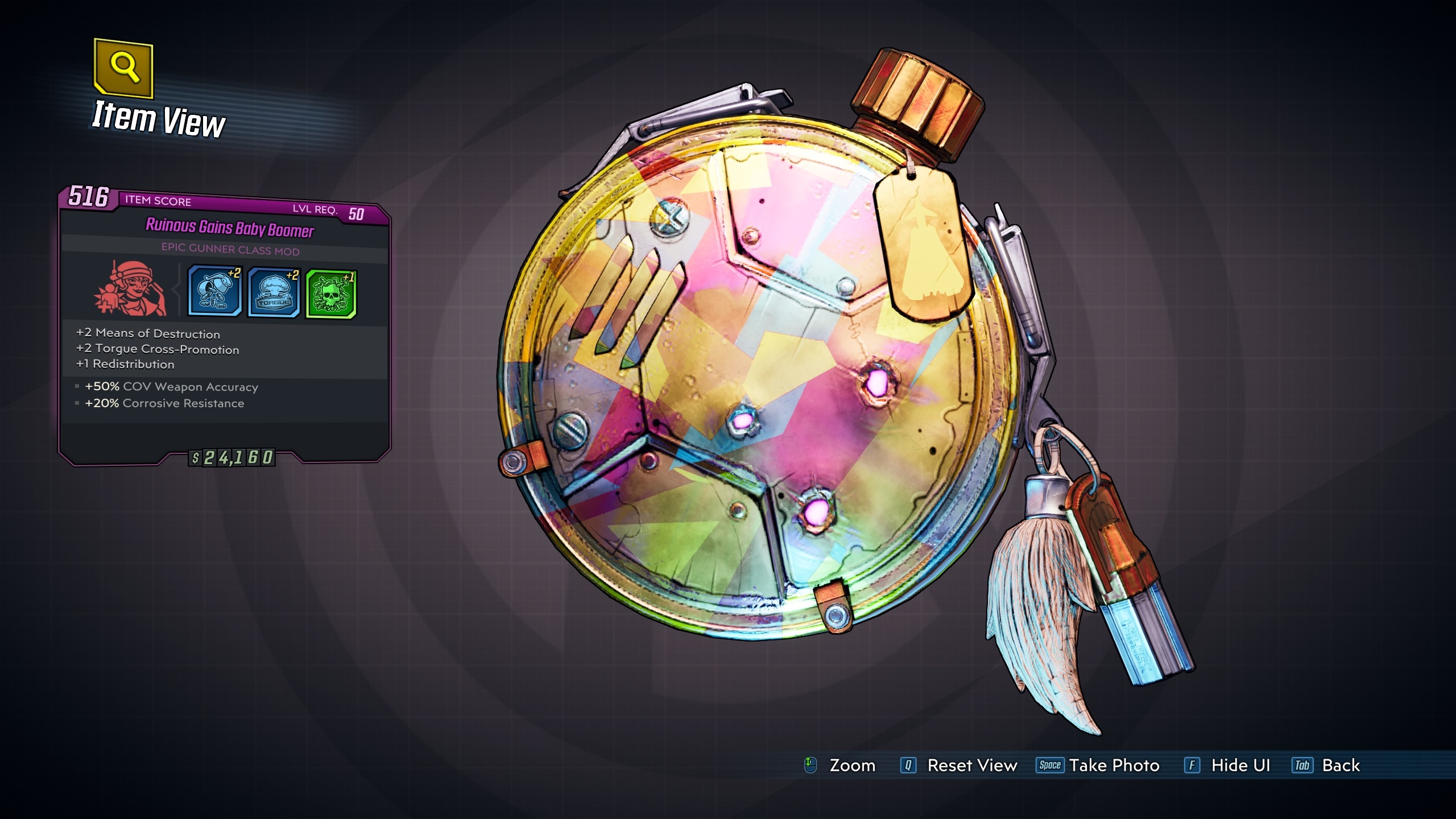Playing the Game of Baby Boomer Bingo With a tight job market and a drain on experience, baby boomers can help employers fill out the winning workplace card. Check out our baby boomer games selection for the very best in unique or custom, handmade pieces from our shops. Because baby boomers, the generation born from 1946 to 1964, not only enjoyed the fruits of America’s midcentury, postwar peak, but their pop-cultural reference points are second to none in both quality and kitsch. If you’re a true boomer, this baby boomer quiz should be easy. If you’re not, good luck. Boom Again is specifically a “Boomer Culture” trivia game. It is the fun opportunity for Baby Boomers to play together again.

If you’re Of A Certain Age, you likely have fond memories of laying on your stomach, or sitting at the kitchen table, playing a board game with friends or family. As Rick Polizzi and Fred Schaefer note in Spin Again: Board Games from the Fifties and Sixties, “In many ways, our childhoods are defined by the games we played. There is a certain camaraderie present when we stumble onto someone who owned and played the same games we did.”
Board games have been around for thousands of years. Senet, believed to be the first board game, dates to 3100 BC. And they’ve remained popular across time and cultures. Even with the rise of computer games and massive multiplayer online games, and the decline of “family time” around a square of cardboard on the kitchen table, board games have survived. In fact, board game sales are on the rise.
I’m not here to give you a history of board games. In addition to Polizzi and Schaefer’s book, this has already been done quite well online in The Full History of Board Games. I want to share memories of five board games we all grew up with – some great and still around, some faded into obscurity because of their… lack of greatness, shall we say. I will, however, throw in a couple of interesting bits of historical trivia. The 60s, especially, saw a boon of board games released. Some, like Mystery Date and The Patty Duke Game, were geared toward girls, while others, like Fight in the Skies and Combat, were more attractive to boys. But most board games were designed to be fun for everyone. And there-in lies their staying power and their popularity. You could play them with anyone, any time.
Almost everyone’s first game
Many Baby Boomers’ first board game was Candy Land, a game designed in 1949 by Eleanor Abbott, while she was recovering from polio in San Diego, California. The game was bought by Milton Bradley Company (now owned by Hasbro) and first published in 1949. The simple race-to-the-finish game required no reading ability, but taught counting, taking turns, and manual dexterity. Candy Land has gone through a number of iterations over the years, but it’s basic premise remains the same. The image included here is the 1962 version, and the one Baby Boomers will be most familiar with.
Candy Land was involved in one of the first disputes over internet domain names. In a twist of irony, even though this is a game for young, innocent children, an adult web content provider registered candyland.com (probably brought a whole new meaning to Gumdrop Mountains). Naturally, Hasbro objected. The company obtained an injunction, and eventually gained ownership of the site (it now redirects to the main Hasbro site). But the game itself has stood the test of time. A December 2005 article in Forbes magazine analyzed the most popular American toys by decade, with help from the Toy Industry Association. Candy Land led the list for the 1940–1949 decade. In 2005, the game was inducted into the National Toy Hall of Fame at The Strong in Rochester, New York. These days, there’s even a Dora the Explorer licensed online version.
Everyone played it, not many liked it
Many sophisticated board games proliferated in the 60s. Probably the best known, and longest lasting (in more ways than one), is Monopoly. Hasbro currently lists 37 versions of the board game – and there are many other versions out there: pirate versions, non-profit versions used as fund-raisers, special short-term versions, etc. There’s even an H.P. Lovecraft inspired version called Cthulhu and a competing, but unlicensed, version called The Doom that Came to Atlantic City (the latter thanks to a successful Kickstarter campaign).
Although falsely credited to Charles Darrow, American anti-monopolist Elizabeth (Lizzie) J. Magie Phillips, patented a game she called The Landlords Game in 1904. She intended it to be an educational tool to illustrate the negative aspects of concentrating land in private monopolies and to discredit Henry George’s Georgism single-tax system.

It’s likely everyone reading this has played at least one version of Monopoly. And if you played the classic version in the 50s, you probably fought over who got the battleship, dog, and race car, and who got stuck with the iron and what we called the “weird plow” (which I only just learned in researching for this blog was actually a cannon — in the 60s this token was replaced with the wheelbarrow). It may not have been your favorite game, and may have sparked more than one sibling fight, but I included it here because it was ubiquitous. And thanks to so many versions and variations, it still is.
Games that weren’t nearly as fun as they looked in the ads
In all fairness, few games are actually as fun as the ads make them look, and even fewer hold up to the test of time and repeated playing. But there are a few notable stinkers, at least from my own childhood. We all remember them. they were the Hot Games to receive from Santa on Christmas morning. Most of us begged for at least one of them. And the thrill of unwrapping our most-wished-for treasure bordered on the delirious. But one single attempt at playing the precious gift was usually enough to reveal the truth. The games were too complicated to set up compared with the pay off, sort of like standing in line for two hours to ride a 1:30 roller coaster that only does one crazy loop, or peeling the wrapper off that drumstick you got from the ice cream truck only to find it looked nothing like the picture. Here are two of the worst board games from the 60s:
1. Mouse Trap
The Mouse Trap game! Oh didn’t the commercial make it look like So Much Fun! If we’d used the acronym OMG back then, we’d have written it all over every print ad we saw. But it just didn’t work out for us like the commercials showed it would. It took forever to set up the game, and often it didn’t work. When it DID work, it was great to watch, but the instructions were complicated, and the setup took forever when played by the rules.
Even game-reviewer Board James had difficulty setting it up – he even made a video (mild language). Like James, most kids would have been happy just setting up the trap and then watching the Rube Goldberg contraption do its thing. But how many times could we do that and still enjoy the game? It pretty quickly became more trouble than it was worth. So we moved on to games with a better playing-time-to-payoff ratio. That didn’t include this next one…
2. The Green Ghost Game
The Green Ghost Game was one of my personal longed-for games. The commercial made it look like one of the Best Games Ever! (Sadly there are no commercials online.) It was “THE EXCITING GAME OF MYSTERY THAT GLOWS IN THE DARK.” How could a kid resist such a pitch? There were just two catches: it was another game that took a lot of setup time, and, once set up, you had to leave it in bright light long enough for the phosphorescent surfaces to “charge” before you could actually play.
The premise was to traverse the board and try to collect more “ghost kids” from inside the trap doors than the other players collected. But collecting the most ghost kids didn’t mean you won. When all twelve ghost kids were retrieved from the traps, you placed them in little holes on the Green Ghost spinner, and each player had to remember which ghost kids were theirs. Then the large Green Ghost was spun one more time, and whatever ghost it pointed to magically became Kelly. Whoever had found the randomly selected Kelly won the game. Besides being able to lose based on a final spin of the green blob, there were other problems. First, the cool green glow didn’t last, no matter how long you left it to charge. Sometimes you’d have to stop the game to shine a flashlight on everything to charge it up again. Second, the “scary” contents beneath the trap doors weren’t scary, not even to kids: plastic bones, “bat” (chicken) feathers, and rubber snakes.
I played this game a handful of times before giving up on it. I was happy to give it away to some other sucker lucky kid. I cannot fathom why, today, this game has its own Facebook page and web site.
One very special memory of mine
For my seventh birthday in 1962 I received a High Gear Game. It was the only game Dad really enjoyed playing with me, and it fired my interest in mechanical things. It taught me (really) basic mechanical engineering and how motion makes things interact. This vintage commercial shows the game in all it’s spinny glory. There is no Wikipedia or game site entry for this game, which I find sad. It was such a different type of board game and was always one of my favorites. Last year I grew nostalgic for it and searched for one on eBay. Most were either missing pieces or were prohibitively expensive. I finally found one that was listed as missing the plastic pegs (each player had different colored pegs to move up the series of gears) but it was only $7 so I did a Buy-It-Now. To my surprise and total joy, when I slid open the plastic cover on the secret compartment, all pegs were inside. I still love playing this game, although the alternating movement of the gears no longer mesmerizes like it did when I was seven.
There were many other memorable and forgettable games from the childhood days of us Baby Boomers. What was your favorite game? Did you ever play High Gear? What was the game you were most disappointed in once you got to play it?
Related Posts
- 3 simple ways to make the world a better place right now
I took a sabbatical from my blog because I no longer wanted to post about the craft of writing. - Authors don’t watch people the same way normal people do
I just spent a weekend on the Texas Gulf Coast enjoying my first-ever “girlfriends’ getaway.” On Saturday night, we ate - Creative people aren’t usually just creative in one area
Goodness! It’s Tuesday and I forgot all about my weekly Sunday blog. In addition to writing I am also
If you’re Of A Certain Age, you likely have fond memories of laying on your stomach, or sitting at the kitchen table, playing a board game with friends or family. As Rick Polizzi and Fred Schaefer note in Spin Again: Board Games from the Fifties and Sixties, “In many ways, our childhoods are defined by the games we played. There is a certain camaraderie present when we stumble onto someone who owned and played the same games we did.”
Board games have been around for thousands of years. Senet, believed to be the first board game, dates to 3100 BC. And they’ve remained popular across time and cultures. Dns checking tool for mac. Even with the rise of computer games and massive multiplayer online games, and the decline of “family time” around a square of cardboard on the kitchen table, board games have survived. In fact, board game sales are on the rise.
Baby Boomer Board Games
I’m not here to give you a history of board games. In addition to Polizzi and Schaefer’s book, this has already been done quite well online in The Full History of Board Games. I want to share memories of five board games we all grew up with – some great and still around, some faded into obscurity because of their… lack of greatness, shall we say. I will, however, throw in a couple of interesting bits of historical trivia. The 60s, especially, saw a boon of board games released. Some, like Mystery Date and The Patty Duke Game, were geared toward girls, while others, like Fight in the Skies and Combat, were more attractive to boys. But most board games were designed to be fun for everyone. And there-in lies their staying power and their popularity. You could play them with anyone, any time.
Almost everyone’s first game
Baby Boomer Games And Toys
Many Baby Boomers’ first board game was Candy Land, a game designed in 1949 by Eleanor Abbott, while she was recovering from polio in San Diego, California. The game was bought by Milton Bradley Company (now owned by Hasbro) and first published in 1949. The simple race-to-the-finish game required no reading ability, but taught counting, taking turns, and manual dexterity. Candy Land has gone through a number of iterations over the years, but it’s basic premise remains the same. The image included here is the 1962 version, and the one Baby Boomers will be most familiar with.
Candy Land was involved in one of the first disputes over internet domain names. In a twist of irony, even though this is a game for young, innocent children, an adult web content provider registered candyland.com (probably brought a whole new meaning to Gumdrop Mountains). Naturally, Hasbro objected. The company obtained an injunction, and eventually gained ownership of the site (it now redirects to the main Hasbro site). But the game itself has stood the test of time. A December 2005 article in Forbes magazine analyzed the most popular American toys by decade, with help from the Toy Industry Association. Candy Land led the list for the 1940–1949 decade. In 2005, the game was inducted into the National Toy Hall of Fame at The Strong in Rochester, New York. These days, there’s even a Dora the Explorer licensed online version.
Everyone played it, not many liked it
Many sophisticated board games proliferated in the 60s. Probably the best known, and longest lasting (in more ways than one), is Monopoly. Hasbro currently lists 37 versions of the board game – and there are many other versions out there: pirate versions, non-profit versions used as fund-raisers, special short-term versions, etc. There’s even an H.P. Lovecraft inspired version called Cthulhu and a competing, but unlicensed, version called The Doom that Came to Atlantic City (the latter thanks to a successful Kickstarter campaign).
Although falsely credited to Charles Darrow, American anti-monopolist Elizabeth (Lizzie) J. Magie Phillips, patented a game she called The Landlords Game in 1904. She intended it to be an educational tool to illustrate the negative aspects of concentrating land in private monopolies and to discredit Henry George’s Georgism single-tax system.
It’s likely everyone reading this has played at least one version of Monopoly. And if you played the classic version in the 50s, you probably fought over who got the battleship, dog, and race car, and who got stuck with the iron and what we called the “weird plow” (which I only just learned in researching for this blog was actually a cannon — in the 60s this token was replaced with the wheelbarrow). It may not have been your favorite game, and may have sparked more than one sibling fight, but I included it here because it was ubiquitous. And thanks to so many versions and variations, it still is.
Games that weren’t nearly as fun as they looked in the ads
In all fairness, few games are actually as fun as the ads make them look, and even fewer hold up to the test of time and repeated playing. But there are a few notable stinkers, at least from my own childhood. We all remember them. they were the Hot Games to receive from Santa on Christmas morning. Most of us begged for at least one of them. And the thrill of unwrapping our most-wished-for treasure bordered on the delirious. But one single attempt at playing the precious gift was usually enough to reveal the truth. The games were too complicated to set up compared with the pay off, sort of like standing in line for two hours to ride a 1:30 roller coaster that only does one crazy loop, or peeling the wrapper off that drumstick you got from the ice cream truck only to find it looked nothing like the picture. Here are two of the worst board games from the 60s:
1. Mouse Trap
The Mouse Trap game! Oh didn’t the commercial make it look like So Much Fun! If we’d used the acronym OMG back then, we’d have written it all over every print ad we saw. But it just didn’t work out for us like the commercials showed it would. It took forever to set up the game, and often it didn’t work. When it DID work, it was great to watch, but the instructions were complicated, and the setup took forever when played by the rules.
Even game-reviewer Board James had difficulty setting it up – he even made a video (mild language). Like James, most kids would have been happy just setting up the trap and then watching the Rube Goldberg contraption do its thing. But how many times could we do that and still enjoy the game? It pretty quickly became more trouble than it was worth. So we moved on to games with a better playing-time-to-payoff ratio. That didn’t include this next one…
2. The Green Ghost Game
The Green Ghost Game was one of my personal longed-for games. The commercial made it look like one of the Best Games Ever! (Sadly there are no commercials online.) It was “THE EXCITING GAME OF MYSTERY THAT GLOWS IN THE DARK.” How could a kid resist such a pitch? There were just two catches: it was another game that took a lot of setup time, and, once set up, you had to leave it in bright light long enough for the phosphorescent surfaces to “charge” before you could actually play.
The premise was to traverse the board and try to collect more “ghost kids” from inside the trap doors than the other players collected. But collecting the most ghost kids didn’t mean you won. When all twelve ghost kids were retrieved from the traps, you placed them in little holes on the Green Ghost spinner, and each player had to remember which ghost kids were theirs. Then the large Green Ghost was spun one more time, and whatever ghost it pointed to magically became Kelly. Whoever had found the randomly selected Kelly won the game. Besides being able to lose based on a final spin of the green blob, there were other problems. First, the cool green glow didn’t last, no matter how long you left it to charge. Sometimes you’d have to stop the game to shine a flashlight on everything to charge it up again. Second, the “scary” contents beneath the trap doors weren’t scary, not even to kids: plastic bones, “bat” (chicken) feathers, and rubber snakes.
I played this game a handful of times before giving up on it. I was happy to give it away to some other sucker lucky kid. I cannot fathom why, today, this game has its own Facebook page and web site.

One very special memory of mine

For my seventh birthday in 1962 I received a High Gear Game. It was the only game Dad really enjoyed playing with me, and it fired my interest in mechanical things. It taught me (really) basic mechanical engineering and how motion makes things interact. This vintage commercial shows the game in all it’s spinny glory. There is no Wikipedia or game site entry for this game, which I find sad. It was such a different type of board game and was always one of my favorites. Last year I grew nostalgic for it and searched for one on eBay. Most were either missing pieces or were prohibitively expensive. I finally found one that was listed as missing the plastic pegs (each player had different colored pegs to move up the series of gears) but it was only $7 so I did a Buy-It-Now. To my surprise and total joy, when I slid open the plastic cover on the secret compartment, all pegs were inside. I still love playing this game, although the alternating movement of the gears no longer mesmerizes like it did when I was seven.
There were many other memorable and forgettable games from the childhood days of us Baby Boomers. What was your favorite game? Did you ever play High Gear? What was the game you were most disappointed in once you got to play it?

Related Posts
- 3 simple ways to make the world a better place right now
I took a sabbatical from my blog because I no longer wanted to post about the craft of writing. - Authors don’t watch people the same way normal people do
I just spent a weekend on the Texas Gulf Coast enjoying my first-ever “girlfriends’ getaway.” On Saturday night, we ate - Creative people aren’t usually just creative in one area
Goodness! It’s Tuesday and I forgot all about my weekly Sunday blog. In addition to writing I am also

